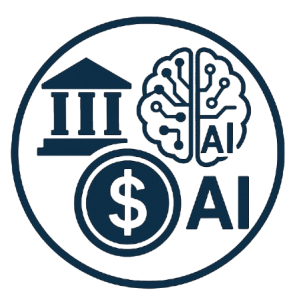Fiscal Policy: Steering the Economic Ship
Fiscal policy, often discussed in economic circles and news reports, might seem like a complex concept. However, understanding its fundamental principles is crucial for grasping how governments manage and influence their economies. At its core, fiscal policy refers to the use of government spending and taxation to influence the economy. It’s a powerful tool that, when wielded effectively, can help stabilize markets, promote growth, and reduce unemployment. This article delves into the definition of fiscal policy and explores its vital roles in macroeconomic management.
Defining Fiscal Policy: A Closer Look
Fiscal policy is essentially the government’s budget strategy. It involves making decisions about how much money the government spends (government expenditure) and how it raises that money (taxation). These two elements work in tandem to shape the overall direction of the economy. For instance, during a recession, a government might increase spending to stimulate demand and create jobs. This is often referred to as expansionary fiscal policy. Conversely, when the economy is growing too rapidly and inflation is a concern, the government might reduce spending or increase taxes to cool things down. This is known as contractionary fiscal policy. The effectiveness of fiscal policy depends heavily on careful planning, accurate economic forecasting, and a clear understanding of how different sectors of the economy will respond to changes in spending and taxation. Furthermore, the political climate and public opinion can significantly impact the implementation and success of fiscal policies.
The Key Roles of Fiscal Policy in Macroeconomic Management
The role of fiscal policy extends far beyond simply balancing the government’s budget. It serves as a critical instrument for managing the overall health and stability of the economy. One of its primary functions is to stabilize the business cycle, mitigating the fluctuations between periods of economic boom and bust. By strategically adjusting spending and taxation, governments can dampen the effects of recessions and prevent the economy from overheating during periods of rapid growth. Another vital role of fiscal policy is to promote economic growth. Governments can invest in infrastructure, education, and research and development, all of which contribute to long-term productivity gains and overall economic expansion. For example, investments in renewable energy can not only stimulate economic activity but also contribute to a more sustainable future. You can explore more about sustainable energy solutions on websites dedicated to environmental policy.
Fiscal Policy Tools: Government Spending and Taxation
The two primary tools of fiscal policy are government spending and taxation. Government spending encompasses all the expenditures made by the government on goods, services, and transfer payments. This includes spending on infrastructure projects, education, healthcare, defense, and social security programs. Taxation, on the other hand, refers to the various ways in which the government collects revenue from individuals and businesses, such as income taxes, corporate taxes, sales taxes, and property taxes. The government can use these tools to influence aggregate demand and overall economic activity. For example, increasing government spending can directly boost demand in the economy, while reducing taxes can increase disposable income, encouraging consumers to spend more. The choice of which tool to use, and how to use it, depends on the specific economic conditions and the government’s policy objectives.
Controlling Inflation Through Fiscal Measures
Inflation, the sustained increase in the general price level of goods and services, can erode purchasing power and destabilize the economy. Fiscal policy plays a crucial role in controlling inflation. When inflation is high, the government can implement contractionary fiscal policy to reduce aggregate demand. This can be achieved by decreasing government spending, increasing taxes, or a combination of both. Lower government spending reduces the amount of money injected into the economy, while higher taxes reduce disposable income, leading to decreased consumer spending. These measures help to cool down the economy and curb inflationary pressures. However, it’s important to note that contractionary fiscal policy can also have negative effects, such as slower economic growth and increased unemployment. Therefore, governments must carefully consider the potential trade-offs when using fiscal policy to control inflation.
Promoting Economic Growth and Stability
Beyond controlling inflation, fiscal policy is also essential for promoting long-term economic growth and stability. Strategic investments in infrastructure, education, and technology can significantly enhance a country’s productive capacity and competitiveness. For instance, investing in transportation infrastructure can improve efficiency and reduce transportation costs, while investing in education can create a more skilled workforce. These investments not only boost economic growth but also contribute to a more stable and resilient economy. Additionally, fiscal policy can be used to address income inequality and promote social cohesion. Progressive tax systems, where higher earners pay a larger percentage of their income in taxes, can help to redistribute wealth and provide resources for social safety net programs. These programs can provide support to vulnerable populations and reduce poverty, contributing to a more equitable and stable society. Read more about Japanese cuisine’s impact on the economy to understand different sectors.
Challenges and Limitations of Fiscal Policy
Despite its potential benefits, fiscal policy is not without its challenges and limitations. One of the main challenges is the time lag between the recognition of an economic problem, the implementation of a fiscal policy response, and the realization of its effects. This time lag can make it difficult to fine-tune fiscal policy and ensure that it has the desired impact on the economy. Another challenge is the potential for political considerations to influence fiscal policy decisions. Politicians may be tempted to use fiscal policy for short-term political gain, rather than for the long-term benefit of the economy. Furthermore, fiscal policy can be subject to crowding-out effects, where increased government borrowing drives up interest rates and reduces private investment. Finally, the effectiveness of fiscal policy can be limited by factors such as the openness of the economy, the level of public debt, and the credibility of the government.












